
Money Tree - Guiana Chestnut
$47
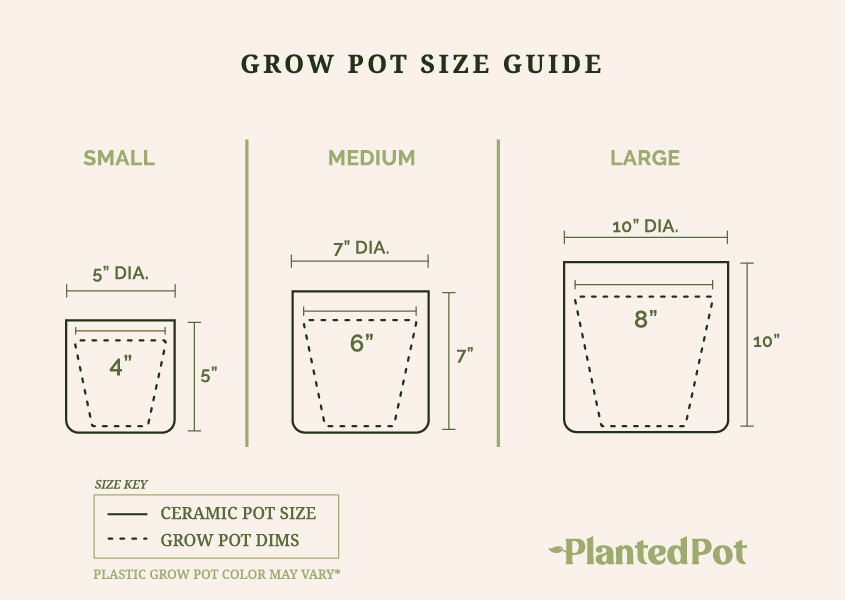 Plastic grow pots come in different colors, you may receive a black or rust colored pot.
Plastic grow pots come in different colors, you may receive a black or rust colored pot.
Small plants look lovely on a desk, and medium plants are perfect for window sills. But what if we need something a little bigger? Allow us to introduce…the Money Tree! This large plant is perfect for living rooms, kitchens, and any space that could use a big splash of nature and color. Whether it’s next to a couch or welcoming guests into your home’s entryway, the Money Tree’s many deep green leaves and “twisted” looking trunk is sure to impress. It prefers a slightly humid area and temperatures between 65-80°F. Give it a deep watering once or twice a month (when most of the soil is dry) and medium to bright indirect light. It got its name when a poor man prayed for money and came across a stunning plant. He started selling its seeds and found that many people wanted the plant to grace their homes. As the story goes, this is how the Money Tree became an iconic house plant. Carry on the tradition by getting yours today!
Bright indirect light
Every 1-2 weeks (when the soil is dry to the touch)
65° – 85°F
Related Products
Money Tree – Guiana Chestnut
Cha-ching! That’s the sound of a cash register dinging to give you some extra moolah! Or, it would be if you had a Money Tree Plant! I don’t know about you, but if a pretty plant with an ornate trunk and luscious leaves also comes with the benefit of increasing my bank account, then count me in!
As a relatively low-maintenance and intricate-looking plant, the Money Tree has become a popular home decor item with interior decorators. If you’ve become a recent parent to a Guiana Chestnut (aka “Money Tree”), or are looking for a cool new plant to add to your collection, check out some reasons why Money Plants can be a great addition to the home.
What Are Money Tree Plants?
The Money Tree plant (pachira aquatica) is a popular, low-maintenance indoor plant that is actually a set of multiple trees grown together. Cultivators twist the trunks of the trees together when the plants are young and soft. As the plants mature, their trunks harden in this shape and continue to grow in that manner.
The plant has symbolized good luck and prosperity for centuries. Its genus name, pachira aquatica, derives from the Guyana language spoken in South America, where the plant originates from. The first modern money tree was cultivated by a truck driver in Taiwan in the 1980s! It soon grew to be a very popular plant with Feng Shui practitioners.
These plants are highly adaptable to their environment with incredible resilience. Growing in the swampy regions of Central and South America, people often cultivate Money Trees as a form of bonsai that live indoors and add a tropical feel to the home.
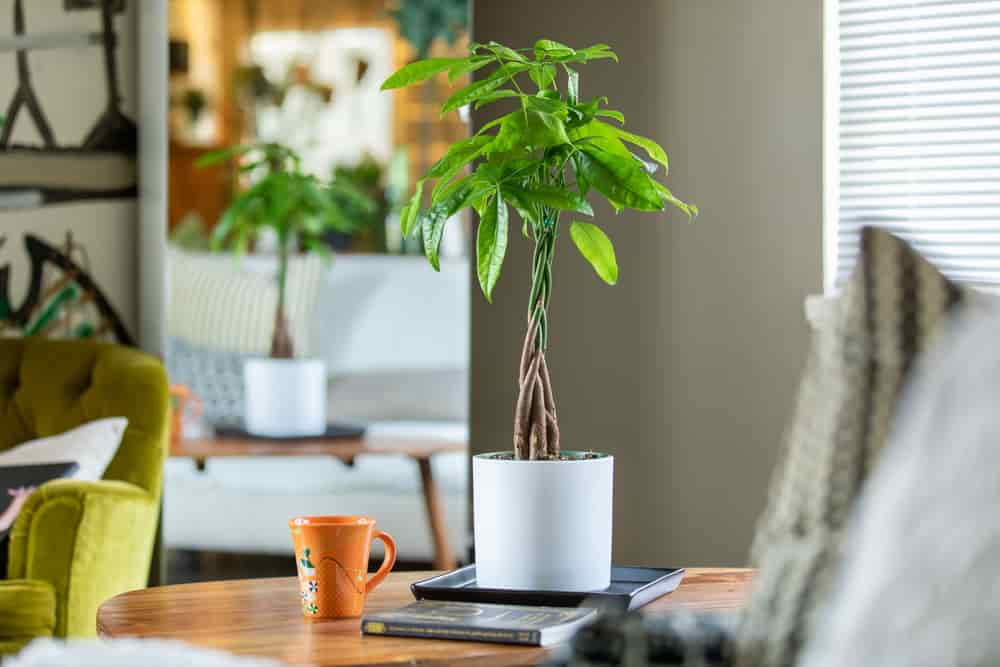
The Folktale
The story of how the Money Tree got its name starts with a poor Chinese farmer who prayed for wealth and prosperity when he came upon the plant. He was able to take the seeds from the tree and cultivate many more to sell. Soon he got the wealth he had asked for!
Money Tree Plant Size
In the wild, the Money Tree can grow several feet tall with larger, thicker trunks than they can indoors. Houseplant Money Trees can be cultivated to grow only a few feet and be trained as ornamental pieces with careful braiding and pruning techniques. Depending on the environment it grows in, these plants can range drastically in size:
- Small: around 3 feet
- Medium: around 6 feet
- Large: up to 60 feet
Light Needed for Money Tree Plants
Bright, indirect light is ideal for a Money Plant. Still, it can also tolerate low light and partially shaded environments while indoors as long as the light around it is bright and its temperature and watering conditions are good. They can even do well under artificial sources of light like the fluorescent lights at your office!
How Often to Water a Money Tree
Preferring light-moderate to high humidity is ideal for the Guiana Chestnut Plant. Watering when the soil appears dry is ideal, though the plant can thrive on little to no water. Humidity-enhancing trays and planters utilizing pebbles and proper drainage holes can replicate the swamps that Money Trees like best without risking root rot.
A rule of thumb is to water when the first 2-4 inches of the soil feel dry, usually about every 4-6 weeks. Water thoroughly until water flows out of the drainage holes, pouring out any excess water collected in the tray, so the roots are not sitting in water. You should allow the Money Tree Plant to dry out over time until the next watering. Spritz leaves daily to help retain moisture and prevent the leaves from falling off.
Safe Temperatures to Thrive In
Though they come from hot locations and thrive on the sun, Money Trees will scorch in direct sunlight, and hot air can dry them out. You should avoid exposing them to direct sunlight or artificial heat from ovens and heating vents.
Why Choose a Money Tree Plant?
Whether you’re looking for a magnificent addition to your garden or to increase your wealth, the Money Tree Plant has become popular for several reasons.
Feng Shui Balance
Feng Shui principles dictate that you can utilize certain areas of your home as balancing sources for the five elements and yin and yang (the concept that opposite forces complement each other). Using a tool called the Bagua map, which helps create the desired harmony throughout a space.
According to this map, the Wealth and Prosperity sector is associated with wood and it will be enhanced by healthy plants and the color green. Placing the Money Tree Plant here will bring positive energies and wealth to you!
Decorative Features
The Money Tree’s ability to be miniaturized makes it a perfect house plant. Cultivators and botanists braid the soft trunk of the tree while it is still young so that it hardens and grows in its identifiable twisted shape. Its flexibility allows for the formation of many different styles, adding a decorative feature to your home or garden.
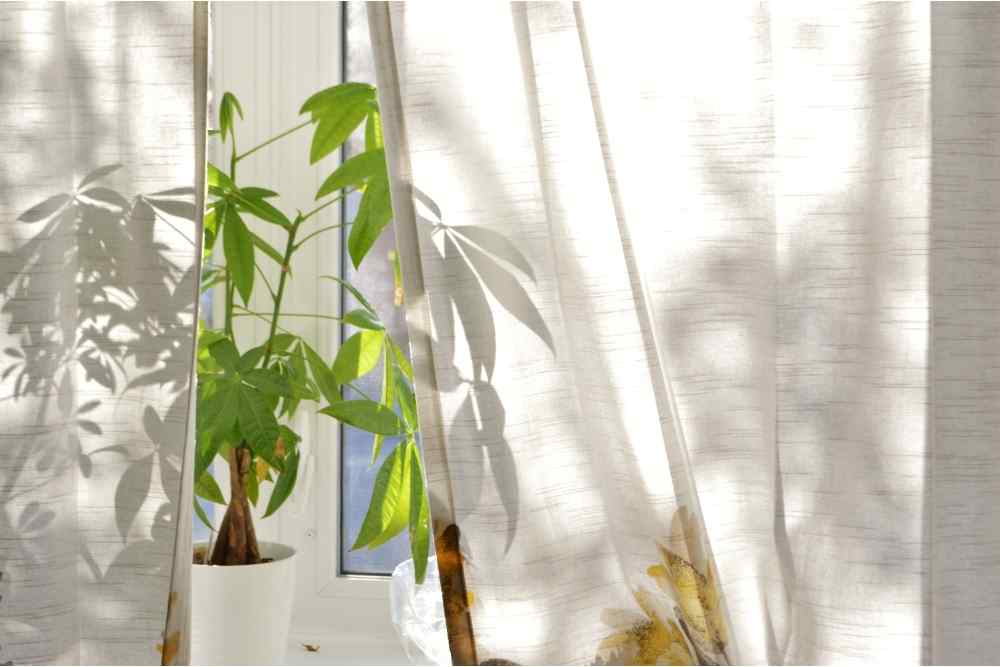
Low Maintenance
High adaptability and a preference for dehydration make the Money Tree a low-maintenance plant that can forgive a few missed waterings. They aren’t picky about their location and only need minimal plant care to keep them thriving and happy.
Air Purification
Plants that purify the air remove small cancer-causing contaminants from the air like formaldehyde and benzene. Money Trees are one of these air-purifying plants that absorb toxic pollutants through their leaves using photosynthesis and release fresh oxygen.
Are Guiana Chestnut Plants Good Indoors & Outdoors?
As long as the conditions are right, Money Trees can live both indoors and outdoors. However, outdoor conditions need to be aligned with a warmer climate for the plant to survive. The United States Department of Agriculture designates zones that outline which plants can survive in certain climates.
The Guiana Chestnut Plant can survive in zones 10 to 12, with average winter temperatures of 30 to 50 degrees Fahrenheit. Any colder temperatures will be too cold for the plant to survive outside, and it is best to keep it indoors.
Are Guiana Chestnut Plants Pet and Children Friendly?
The ASPCA (The American Society for the Prevention of Cruelty to Animals) has cleared the Guiana Chestnut as a non-toxic plant. However, it is not recommended to let your pet ingest parts of the plant as it can cause digestive issues.
You should use extra caution when placing this plant in a home with smaller children. The sap of the Money Tree Plant is poisonous when eaten, so these plants need to be out of the reach of children.
Money Tree Plant Family Relatives
Money Tree plants are a part of the flowering plant family called Malvaceae. Plants in this family commonly have palmate leaves (they look like hands with the fingers spread) and are grown primarily in the tropics of the Americas. The closest relatives to the Money Tree plant include:
- Hibiscus plants
- Cotton
- Okra
- Durian
- Cacao plants
Plants That Are Similar to the Money Tree
Several other plants have inherited the nickname “money tree.” Though they are dissimilar in appearance to the pachira aquatica, they possess many of the same qualities, features, or symbology.
Jade Plant
The jade plant, or crassula ovata, is a popular succulent that grows small pink and white flowers. It is native to the Eastern Cape Providences of South Africa and areas of Mozambique. It has similar features to the pachira aquatica like drought tolerance and low maintenance care.
Lunaria
Meaning “moon-like,” this genus of flowering plants symbolizes honesty, money, and sincerity. It has magenta flowers and is well-known for its flat seed pods that resemble silver dollar coins.
Pothos
A popular houseplant that has become naturalized in tropical climates worldwide, the Pothos is so adaptable that it can survive for long periods in total darkness! Like the Guiana Chestnut, Pothos also prefer moist environments in bright, indirect light and can utilize fluorescent light to photosynthesize. People also refer to it as a money plant.
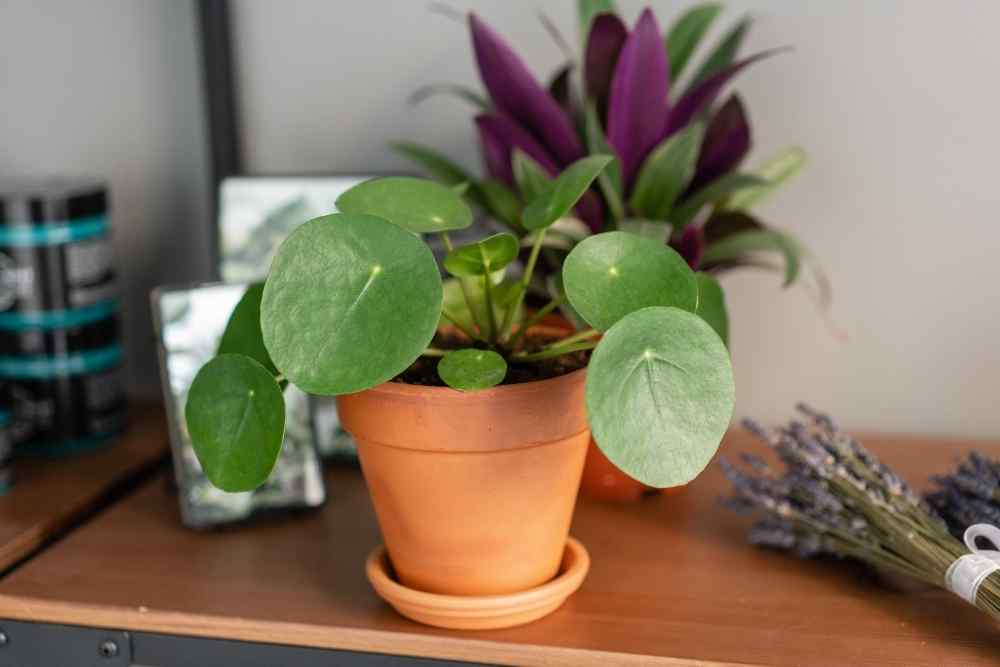
Chinese Money Plant
Pilea peperomioides, aka the Chinese Money Plant, grows coin-shaped leaves and enjoys bright, indirect light. Because of their leaves, people believe that these plants can bring good fortune and money to their owners. According to Feng Shui principles, placing one in the Wealth and Prosperity section of your home will also enhance harmony and bring you wealth and good luck.
Lucky Bamboo
Lucky Bamboo plants grow in the same climate zones as the Guiana Chestnut. Cultivators can train their stalks to grow in a variety of styles, including braids and curled designs. Lucky bamboo thrives in humid, hot environments and is also said to bring good luck and fortune to its owners.
Final Thoughts – Money Tree – Guiana Chestnut Plant
With its stylistic braided trunk, the Money Tree is a chic plant that can add feng shui to any home or garden. For those that have trouble keeping their plants alive, the Guiana Chestnut plant can endure a few missed waterings.
Other plants can bring you luck and wealth, but none are as beautiful or unique as the Guiana Chestnut. For a great indoor plant that brings the right amount of tropical vibes to your space, the Money Tree plant is the one and only!
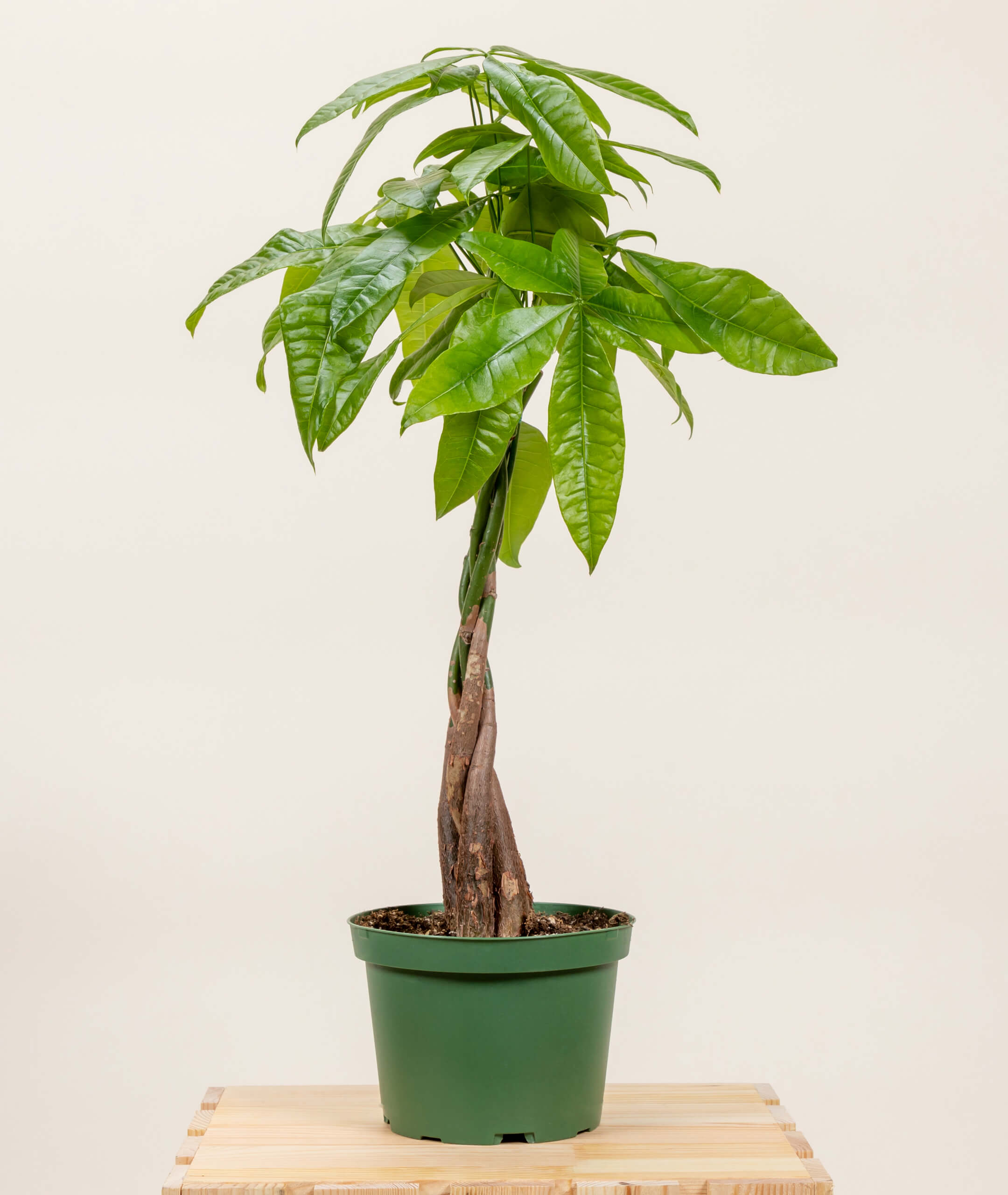
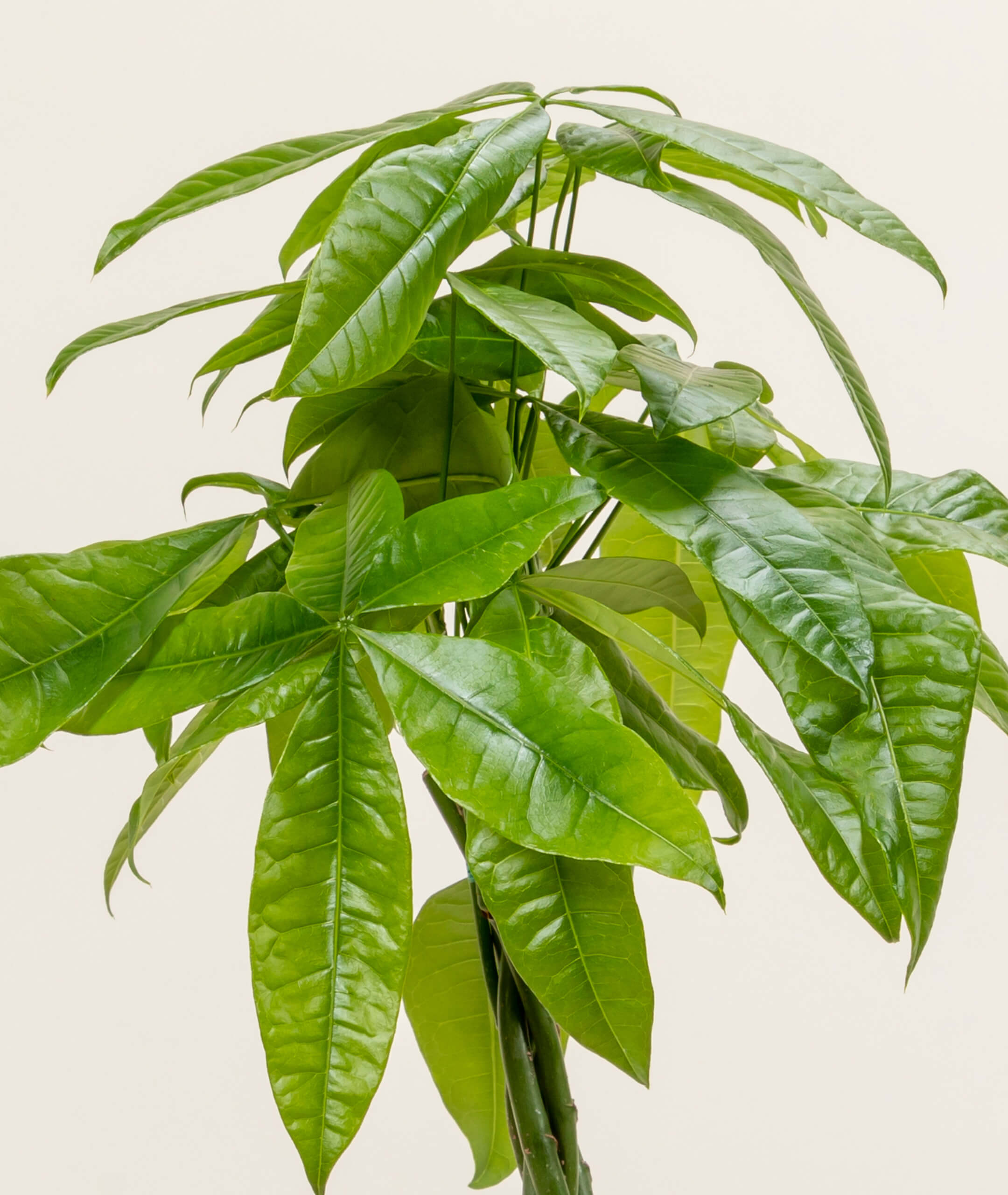



Reviews
There are no reviews yet.